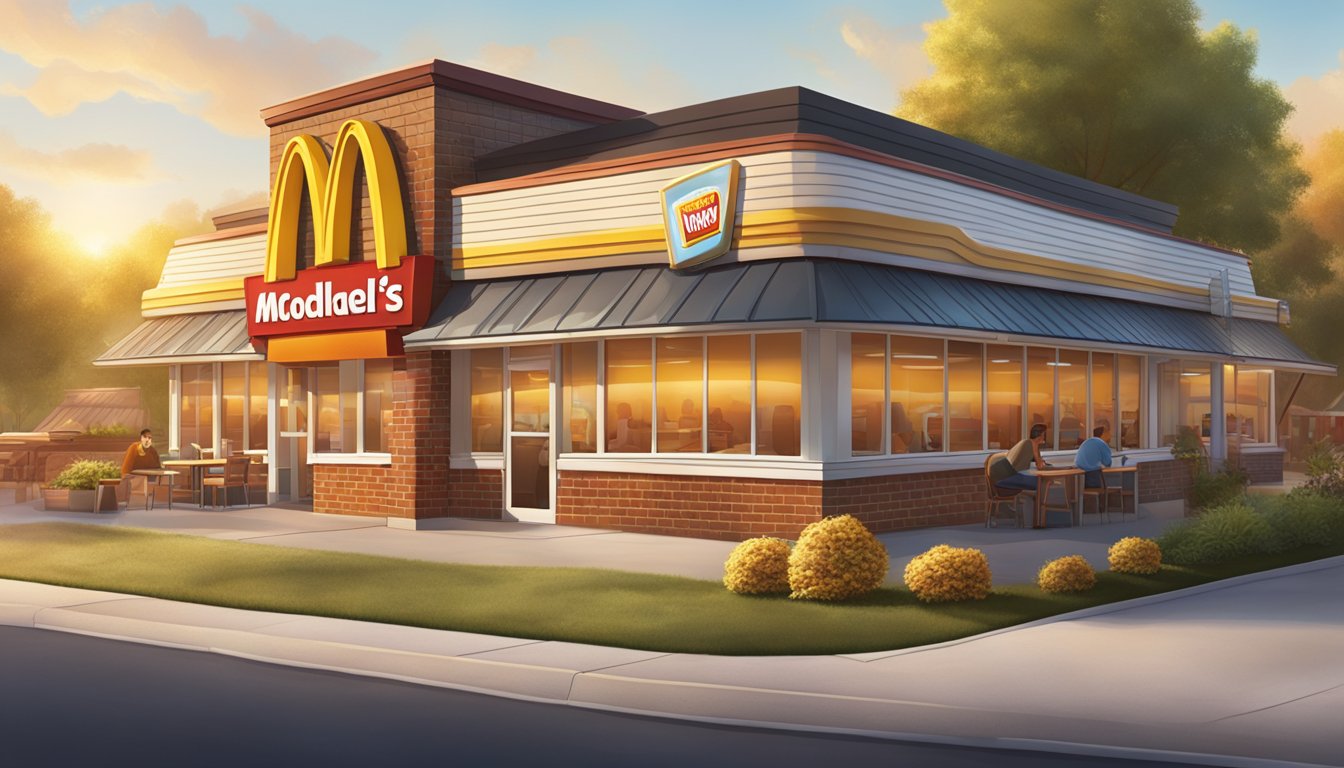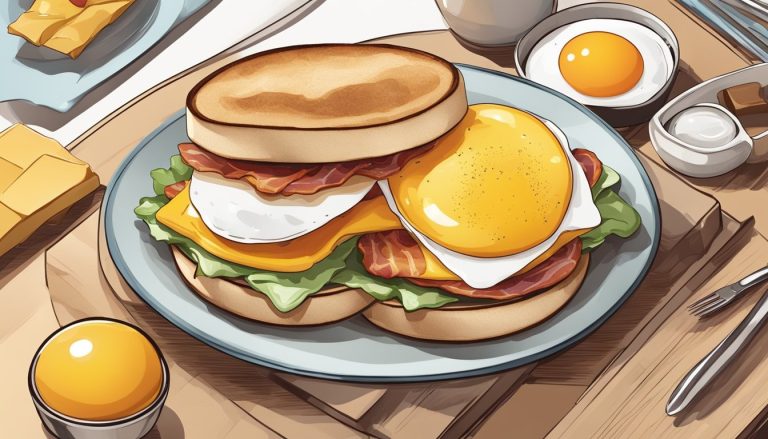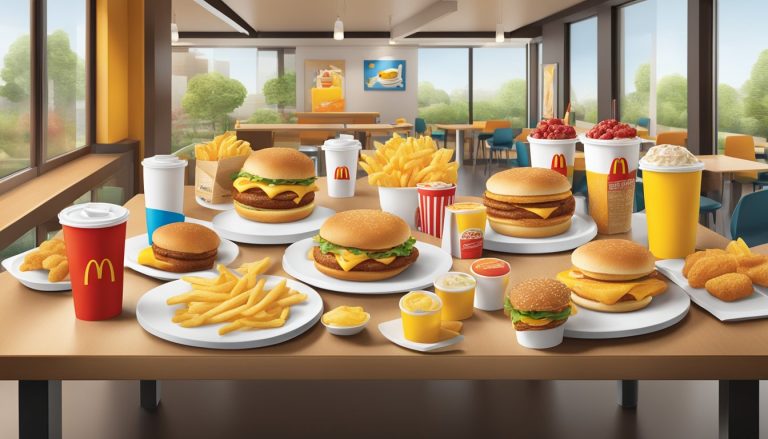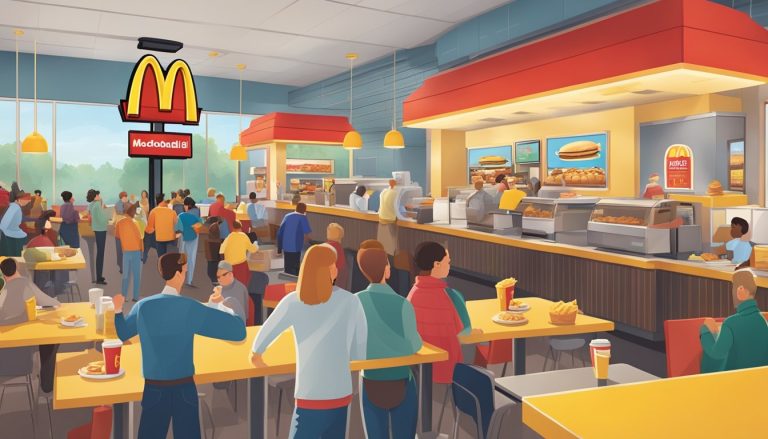McDonald’s breakfast has become a cultural phenomenon, captivating millions of taste buds worldwide. The allure of a warm Egg McMuffin or syrup-drenched hotcakes goes beyond mere hunger satisfaction. Cravings for McDonald’s breakfast are often rooted in a complex interplay of psychological factors, including nostalgia, convenience, and clever marketing strategies.
These cravings tap into deep-seated emotional connections and habits formed over time. The familiar golden arches and consistent menu offerings provide a sense of comfort and reliability in an ever-changing world. McDonald’s has masterfully crafted its breakfast menu to appeal to our psychological vulnerabilities, leveraging the power of habit formation and sensory associations.
The science behind these cravings reveals the impact of carefully balanced flavors and textures. McDonald’s breakfast items are engineered to hit the perfect notes of salt, fat, and sugar – a combination that triggers the brain’s reward centers. This neurological response reinforces the desire for these foods, creating a cycle of craving and satisfaction that keeps customers coming back for more.
Understanding Food Cravings
Food cravings stem from complex biological and psychological factors. They involve brain chemistry, emotional needs, and carefully engineered food formulations.
Biological Roots of Cravings
The brain’s reward system plays a key role in food cravings. When we eat tasty foods, dopamine is released, creating feelings of pleasure and motivation to seek that food again. This neurological response can lead to habit formation around certain foods.
Hormones like ghrelin and leptin also influence hunger and cravings. Ghrelin increases appetite, while leptin suppresses it. Imbalances in these hormones can drive persistent food cravings.
Nutritional deficiencies may trigger specific cravings as the body seeks to obtain missing nutrients. However, cravings often lead to consumption of nutrient-poor fast foods rather than addressing true nutritional needs.
Psychology Behind Comfort Food
Emotional eating is closely tied to food cravings. Many people turn to familiar comfort foods during times of stress, sadness, or anxiety. These foods often have positive associations from childhood or past experiences.
The brain can form strong connections between certain foods and emotional relief. This conditioning reinforces cravings for those foods in response to negative emotions.
Cultural and social factors also shape food preferences and cravings. Foods that are celebrated or restricted in one’s community can become objects of desire.
Sugar, Salt, and Fats: A Trifecta in Fast Food
Fast food companies strategically formulate products to maximize cravings. They often rely on a combination of sugar, salt, and fat – ingredients that light up the brain’s reward centers.
Sugar provides an immediate energy boost and dopamine rush. Salt enhances flavors and can be mildly addictive. Fats contribute to a satisfying mouthfeel and slow digestion, prolonging feelings of fullness.
This combination of ingredients can override the body’s natural satiety signals, leading to overconsumption. The more a person eats these hyperpalatable foods, the more the brain adapts to require them for the same reward response.
McDonald’s Breakfast Appeal
McDonald’s breakfast offerings have become a cultural phenomenon, drawing millions of customers each morning. The success stems from strategic menu design, unparalleled convenience, and compelling value propositions that cater to diverse consumer needs.
Menu Engineering and Choice Architecture
McDonald’s breakfast menu is carefully crafted to maximize appeal and sales. The limited but diverse options create a sense of choice without overwhelming customers. Popular items like Egg McMuffins and hotcakes are prominently displayed, guiding customer decisions.
The menu’s layout employs choice architecture principles, strategically positioning high-margin items. Value meals simplify decision-making by bundling items at attractive price points. This approach encourages customers to spend more while feeling they’re getting a good deal.
McDonald’s also rotates seasonal offerings, keeping the menu fresh and exciting for regular patrons.
The Role of Convenience
Convenience is a cornerstone of McDonald’s breakfast appeal. Drive-thru service allows customers to grab breakfast without leaving their cars, saving precious morning time. The chain’s ubiquity means a McDonald’s is often just minutes away from home or work.
The speed of service is unmatched, with most orders prepared in under 90 seconds. This efficiency is crucial for time-pressed morning customers. McDonald’s also offers mobile ordering and delivery options, further enhancing convenience.
The familiar golden arches serve as a beacon for hungry commuters, providing a reliable and quick breakfast solution.
Signature Meals and Value Proposition
McDonald’s signature breakfast items, like the Egg McMuffin and Hash Browns, have achieved iconic status. These unique offerings create a strong brand identity and customer loyalty. The consistency of these items across locations ensures customers know exactly what to expect.
Value meals combine popular items at discounted prices, appealing to budget-conscious consumers. These bundles often include a drink, making them a complete breakfast solution. The perceived value encourages repeat visits and larger orders.
McDonald’s also offers a premium “signature range” for those seeking higher-quality options. This diverse menu caters to various preferences and price points, broadening the chain’s appeal.
Marketing and Consumer Behavior
McDonald’s employs sophisticated marketing tactics to drive breakfast cravings and consumer behavior. The company leverages advertising, branding, nostalgia, and digital strategies to maintain its dominant position in the fast food breakfast market.
Advertising and Branding Strategies
McDonald’s marketing campaigns focus on creating positive associations with their breakfast menu. The golden arches logo is instantly recognizable worldwide. Commercials often feature appetizing close-ups of Egg McMuffins and hash browns.
Slogans like “I’m lovin’ it” reinforce brand identity. McDonald’s uses consistent color schemes and imagery across all marketing materials. This cohesive branding helps build trust and familiarity with consumers.
The company also emphasizes value, promoting deals like the “Dollar Menu” to attract budget-conscious customers. Limited-time offers create urgency and drive sales of new or seasonal breakfast items.
Targeting Children and Families
McDonald’s markets heavily to children and families. The Happy Meal, introduced in 1979, remains a powerful tool for attracting young customers. Toys and movie tie-ins make eating at McDonald’s an exciting experience for kids.
Playgrounds at many locations encourage families to visit. The company sponsors youth sports teams and educational programs to build goodwill. Ronald McDonald serves as a friendly mascot, appealing to children.
Critics argue these tactics contribute to childhood obesity. In response, McDonald’s has added healthier options like apple slices to kids’ meals. The company also promotes physical activity through various initiatives.
The Influence of Nostalgia and Habit
McDonald’s capitalizes on nostalgia to drive breakfast cravings. Many adults have fond childhood memories of McDonald’s visits. The familiar taste of an Egg McMuffin can trigger these positive associations.
Habit formation plays a key role in McDonald’s success. Consistent menu offerings and restaurant layouts make repeat visits effortless. Many customers develop routines around McDonald’s breakfast, stopping by on their way to work.
The company reinforces these habits through loyalty programs and mobile apps. Regular promotions encourage customers to maintain their McDonald’s breakfast routine.
Digital Marketing and Mobile Ordering
McDonald’s has embraced digital marketing to reach modern consumers. The company maintains active social media accounts, sharing promotions and engaging with customers. Targeted online ads remind users about breakfast options during key morning hours.
Mobile ordering has become a major focus. The McDonald’s app allows customers to place orders for pickup or delivery. This convenience appeals to busy professionals and families seeking quick breakfast solutions.
Geolocation technology enables McDonald’s to send push notifications when users are near a restaurant. The app also offers personalized deals based on past ordering history, encouraging repeat visits and breakfast cravings.
The Health Perspective
McDonald’s breakfast cravings can have significant impacts on health and nutrition. Exploring menu options, developing a healthier relationship with food, and addressing compulsive eating behaviors are key considerations.
Nutrition and Menu Options
McDonald’s breakfast menu offers a range of choices with varying nutritional profiles. Some options provide more balanced nutrition than others. Egg McMuffins contain protein and can be a reasonable choice when paired with fruit. Oatmeal with fresh fruit offers fiber and vitamins.
Higher-calorie items like pancakes and sausage biscuits are less nutritionally dense. These foods are often high in saturated fat, sodium, and added sugars. Regular consumption may contribute to weight gain and increased health risks.
McDonald’s has introduced some healthier alternatives in recent years. Greek yogurt parfaits and fruit & maple oatmeal provide more nutrients with fewer calories. Choosing these items can help satisfy cravings while supporting better health outcomes.
Building a Healthier Relationship with Food
Developing a balanced approach to McDonald’s breakfast cravings is essential for long-term health. Mindful eating practices can help individuals make more conscious choices. This involves paying attention to hunger cues and eating slowly to savor flavors.
Planning ahead can also support healthier habits. Preparing nutritious breakfasts at home most days of the week allows for occasional McDonald’s treats without overreliance. Balancing cravings with nutrient-rich alternatives helps maintain overall dietary quality.
Moderation is key when indulging in fast food breakfasts. Limiting portion sizes and frequency of visits can help manage calorie intake. Pairing McDonald’s items with fresh fruits or vegetables adds nutritional value to the meal.
Addressing Compulsive Eating
For some individuals, McDonald’s breakfast cravings may be linked to compulsive eating patterns. Recognizing triggers for these cravings is an important step. Common triggers include stress, boredom, or emotional distress.
Developing alternative coping strategies can help manage compulsive eating urges. Exercise, meditation, or talking with a friend are healthier ways to address underlying emotions. Keeping nutritious snacks on hand can also provide better options when cravings strike.
Professional support may be beneficial for those struggling with persistent compulsive eating behaviors. Nutritionists and therapists can provide personalized strategies to address food-related challenges. Cognitive-behavioral therapy has shown effectiveness in treating compulsive eating disorders.
McDonald’s Operational Insights
McDonald’s operational strategies focus on maximizing profits while enhancing customer experience. The company leverages technology and innovative service models to stay competitive in the fast food industry.
Maximizing Profit Margins
McDonald’s employs several tactics to boost profit margins. The company optimizes its supply chain, negotiating favorable deals with suppliers to keep ingredient costs low. Efficient kitchen layouts and standardized cooking processes reduce labor costs and minimize waste.
Menu engineering plays a crucial role. High-margin items are strategically placed on menus and promoted through combo meals. The company also adjusts pricing based on location and demand.
McDonald’s uses data analytics to forecast demand, ensuring optimal inventory levels and reducing food spoilage. This approach helps maintain quality while controlling costs.
Impulse Upsells and Customer Experience
McDonald’s design encourages impulse purchases through strategic product placement. Digital menu boards display appetizing images and highlight promotional items.
Self-service kiosks streamline ordering, reducing wait times and labor costs. These touchscreens subtly prompt customers to add extras or upgrade sizes, boosting average transaction values.
The company focuses on speed of service, aiming to deliver orders within 90 seconds. This quick turnaround satisfies customers and increases throughput during peak hours.
McDonald’s loyalty program incentivizes repeat visits and provides valuable customer data for targeted marketing campaigns.
The Evolution to Restaurant of the Future
McDonald’s is reimagining its dining experience with the “Restaurant of the Future” concept. This model incorporates table service, allowing customers to order via mobile app or kiosk and have food delivered to their table.
The redesigned interiors feature modern decor, comfortable seating, and device charging stations. These upgrades aim to encourage longer visits and higher spending.
Digital integration is key, with mobile ordering and payment options reducing friction for customers. Some locations are testing automated drive-thrus to further streamline operations.
Environmental factors are considered, with energy-efficient equipment and sustainable packaging becoming standard. These initiatives appeal to eco-conscious consumers and reduce long-term operational costs.
The Technological Edge

McDonald’s leverages cutting-edge technology to enhance customer experiences and streamline operations. Digital innovations play a key role in shaping breakfast cravings and purchasing behaviors.
Digital Displays and Working Memory
Digital menu boards at McDonald’s use dynamic visuals to capture attention and influence choices. These displays showcase appetizing breakfast items, rotating promotions, and combo deals. The vibrant imagery activates working memory, making menu items more memorable and desirable.
Strategically timed content changes on screens can prompt impulse purchases. For example, displaying a steaming cup of coffee right before peak breakfast hours may trigger cravings in customers.
McDonald’s also employs personalized digital kiosks for ordering. These interfaces remember past orders, speeding up the selection process and encouraging repeat purchases of favorite breakfast items.
Home Delivery and Drive-Thru Innovations
McDonald’s has embraced mobile ordering and delivery services to cater to changing consumer habits. The convenience of having breakfast delivered directly to homes or offices has expanded the reach of McDonald’s morning offerings.
Drive-thru technology has seen significant advancements. Voice recognition systems and digital confirmation boards improve order accuracy. Some locations feature multiple lanes with digital menus that adjust based on time of day and inventory.
Predictive algorithms help optimize drive-thru operations during peak breakfast hours. This reduces wait times and enhances customer satisfaction. Mobile apps allow customers to place orders in advance, further streamlining the drive-thru experience for those rushing to work.




